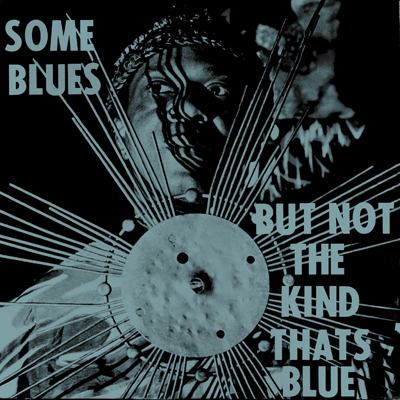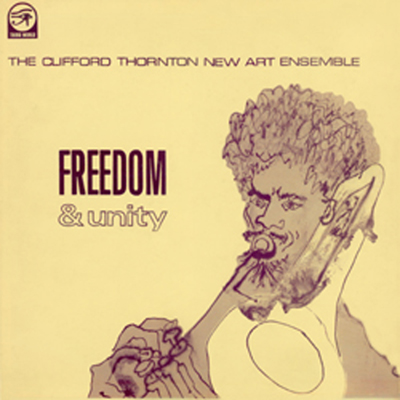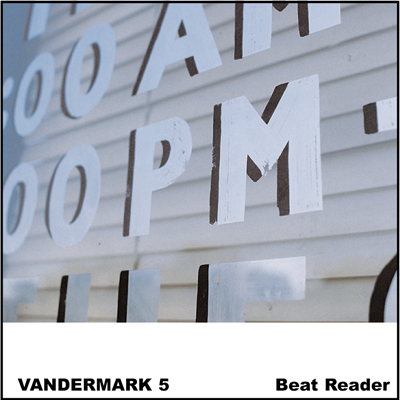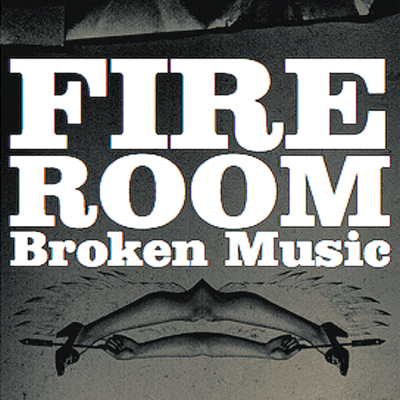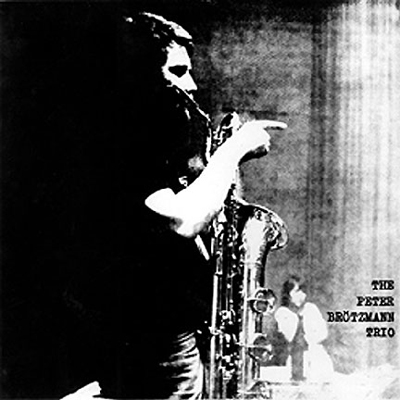| « Darkness on the Edge of Town | FestFestFest » |
Feature Thu Jul 24 2008
Atavistic Records - A Survey of Old and New Dreams
Anyone who has cared about adventurous and outward-bound sound in the past 22 or so years has probably drooled after some portion of the Atavistic Records catalog. I first remember them from ads in magazines like Option in the late '80s, hawking videotapes by bands I had only heard and been forced to imagine in my mind — The Butthole Surfers, Einsturzende Neubauten, Big Black, Foetus, Savage Republic, the crème de la crazy at the time. For a home-bound teenage suburbanite with big ears and no close towns, the idea of a label which put out videos by bands as shockingly uncommercial as this was a strong enough pull to drag me into a new city and a new life. Not that I based my decision to pull up stakes and move on state over on some ads in a magazine, mind you.
Early records by the label included multiple recordings by planet-heavy NYC composer Glenn Branca (he of the "100 Guitar Symphony" and the like). Like their logo, a huge satellite dish pointed up into the sky, Atavistic seemed to be pulling in transmissions from the deep black unknown. I knew of Atavistic then as a rock label in the day, but now, even though the label still releases reissues of bands like the Flesh Eaters and 8-Eyed Spy, their first priority is jazz. Modern jazz, free jazz, "Fire Music" to use the vernacular. Not only modern works by new and established acts here, Atavistic also reaches its tendrils into the discographically fraught past with its long-running Unheard Music Series, pulling long-lost gems of free music into the present, for the benefit of those us who were never within 300 miles or 35 years of "being there" the first time around.
Atavistic seems to be reproducing by cell division lately, as their catalog explodes every few months in numbers that other labels must save up for a whole year to accomplish. Enclosed, please find reviews of six modern and classic Atavistic jazz recordings to get you started.
Sun Ra: Some Blues, but Not the Kind That's Blue (reissue)
First off, Atavistic unearths some very rare small-group Arkestra recordings, mostly focusing on covers/standards in a warm, intimate, though ultimately odd, setting. As the first few minutes of the title track unwind, the busy percussion, abstract basslines and all-around confusion could lead one to the conclusion that this will be a weirdy in the realms of Cosmic Tones for Mental Therapy. However, only a few minutes elapse before the group (including his legendary tenor player John Gilmore, trumpet Akh Tal Ebah, alto and flute from Marshall Allen & Danny Davis, James Jacson on flute and bassoon, Eloe Omoe on bass clarinet, Richard "Radu" Williams on bass, Luqman Ali on drums, and Atakatune on conga) launch into a much jauntier theme.
Like another jazz titan currently obsessed over by this reviewer (Rahsaan Roland Kirk), Ra's concept of jazz knows no genre or chronological constraints, and his jaunty, rollicking piano on this track, as well as on "I'll Get By" are so buoyant, it's almost easy to forget that this is the same man who cut your head into fives with The Helicocentric World of Sun Ra. Especially illuminating is the group's take on "My Favorite Things," finding still more layers of deep melancholy in the original while acknowledging and respecting Coltrane's own epoch-defining rendition. Gilmore works a similar modal field without ever sounding like a copycat, spiraling bluesy, melancholic lines through a minor-chord undertow. As mentioned, the disc contains three renditions of "I'll Get By," a 1928 standard by Roy Turk and Fred Ahlert, and popularly sung by Ruth Etting. This might sound at first like the usual jazz-nerd demand of "having to hear every take in the session," but it's not. The final two versions were recorded four years earlier, with an even smaller band, including Ra on organ, Gilmore on tenor for one version, Akh Tal Ebah on flugelhorn for the other, and Ronnie Boykins on bass. Each take, one featuring Ebah's Miles Davis-under-a-blanket horn line, the other Gilmore's plaintive love cry, more than justifies the multiple versions on display. And listen to the way the group twist the cover of "Black Magic" within an inch of its life without ever really betraying the ghost of the original. Percussion, as usual, is pushed absurdly forward in the mix, a tendency that makes even Ra's most inside performances sound just a little, well, spacier. This disc might not be for you if your only version of The Man From Saturn is Heliocentric Worlds or The Magic City, but for Ra fans down with Jazz In Silhouette or Sun Song, to say nothing of the R&B turns exhibited on the 2-CD singles collection, these blues will be completely essential.
Clifford Thornton - Freedom & Unity (reissue)
Thornton's name might not even raise an eyebrow on casual free-jazz fans, despite his heavy inclusion in Valerie Wilmer's seminal book As Serious as Your Life. Before this reissue, the valve-trombonist's (that means a trombone that's played like a trumpet) name seemed to have disappeared from the mouths of free jazz fans, if not the history books, and why not? Without any available recordings to hear, what's there to talk about?
Finally, this reissue of Thornton's 1969 LP on Third World rectifies the situation. Mastered from a scratchy vinyl copy (the original tapes are no doubt long gone), the fidelity shouldn't upset any but the most hard-to-please fidelity hounds. The amount of awesome in this disc is almost absurd in its relation to the obscurity it has languored in all these years. Everything tried here is an amplified version of its contemporaries — the swinging stuff swings that much harder than most, the bass player is more melodic, the compositions more detailed…everything is revealed in deeper colors. The group is capable of executing intricate, beautiful compositional pieces (shades at times of Charles Mingus, or someone as grandiose as, say, Oliver Nelson) that can jump the tracks in an instant, turning into squared-circle improv chest-bumping. The lineup on the primary tracks (trombone, alto sax, vibes, bass, and drums) are as subtle and sharp at MJQ, but can get as wooly as New York Eye & Ear Control. The bonus tracks add more bassists, including the legendary Jimmy Garrison, as well as some swell, quasi-regimental cornet from Edward Avent on a few tracks (shades of Don Ayler on Love Cry).
With any luck, this reissue will bring Thornton out of the land of obscurity and into the light, much like the reclamation of Noah Howard from a few years back.
Vandermark 5 - Beat Reader
Saying you're a fan of jazz in Chicago but that you're not really up on the Vandermark 5 is like saying you're a big Chicago literature buff but haven't read The Man with the Golden Arm yet. It's a patently absurd statement that indicates a huge hole in one's big picture, and it's a confession I make to you now.
Like many other Chicago landmarks, I made the mistake of postponing a date with the Vanderrmark 5 and their long standing nearly-every-Wednesday session at the Empty Bottle. For years. I promised myself I'd go "one of these weeks," kind of like the way you'd take your parents to see the Art Institute when they're in town, but wouldn't think to go yourself, even though it's cheap (free sometimes) and endlessly rewards multiple visits. Sure, I've heard all of these musicians (Vandermark, baritone sax and clarinet; Dave Rempis, alto and tenor sax; Fred Lonberg-Holm, cello; Kent Kessler, bass; Tim Daisy, drums) in numerous large and small groups and admired their invention and musical dexterity. But the Vandermark 5 gigs just seemed like they'd always be there, the way you expect to turn on your tap and have water come out every time. Now, of course, Vandermark's all MacArthur Genius Grant, and he gets offers for gigs all over the world. There's no reason for him to stand around on the street corner, waiting for me and people like me to deign to rouse ourselves from the easy chair for a night of incredible music — he's moved along. Good for him, and bad for me.
If you're listening to Beat Reader, and the band who created it, for the first time, you may feel a sick feeling in the stomach, as a horrible realization dawns that an amazing thing has been going all around you for years, years that you won't get back. The band spins, jabs, and glides over Vandermark's compositions with the easy rapport of a band that have spent so much time together, they could probably approximate the exact way that each person takes a shit. The fluid improvisations, nested inside clear, dexterous composition reminds me not a little of Tim Berne's legendary Bloodcount group (themselves influenced by Julius Hemphill). The NY/Chicago connection is further reinforced on track four ("Signposts (For Lee Friedlander)"), where Vandermark starts spiraling and shrieking on the clarinet like a Klezmer musician with rabies.
The band can change gears facilely, knowing when to get off a certain mode before it's run into a 45 minute rut (unlike Bloodcount), but aren't so quirky about their changes as to suggest something as blocky and cartoony as, say, Naked City. For all his considerable instrumental skill, Vandermark is a man who was born to write — his compositions stand out in all live situations, especially with the expanded reins he's been given when working with the Peter Brotzmann Tentet and other large-group situations.
Make no mistake, though — despite this disc's close proximity to a number of free jazz reissues and the members' dedication to the "one jungle, one machete, no survivors" school of improvisation, this is a jazz record, not a free jazz record. Each track is scripted to a fault, full of rumble-tumble changes and flash-points set ups to change gears on a dime, and, apart from individual solos, could be replicated again and again on stages all over the world. The best compliment I can give Beat Reader is that it is not made up of pieces, but of songs.
Gregg Bendian's Interzone - Requiem for Jack Kirby
Knitting Factory regular Bendian (vibes) has conducted his Interzone Orchestra as a functioning entity for over a decade, but in that time, only a handful of recordings have surfaced. This one, an 80 minute "chamber-prog-jazz epic" dedicated to Jack Kirby, the legendary Marvel Comics writer/illustrator whose artwork graces the fold-out liner notes/mini-poster, features an uncommon jazz lineup — Bendian on vibes, Nels Cline (of Wilco fame and other, far more significant accomplishments) on electric guitar, Alex Cline on percussion, and Joel Hamilton on bass. It's 80 minutes of smooth, flowing jazz-like composition, improvisational sputters, and occasionally chaotic instrumental interplay. Sonic/tonal palette could be compared to Bill Frisell's trio from the early '90s with Kermit Driscoll and Joey Baron. Despite its considerable running time, the album doesn't make much of an impression, as each track sounds rather similar, and the pattern of amiable chatter devolving into aggressive gestures becomes rote very quickly. Also, apart from the gushing liner notes (including remembrances of Kirby from other Marvel illustrators and writers) and allusions to Kirby's influence among musicians (Paul McCartney was a fan, it seems), it's hard to find the point of the whole thing. If you've ever pined for the glory days of Knitting Factory second-stringer bands like Joey Baron's Barondown or Samm Bennett & Chunk, Mr. Bendian would like you to put your email address on his mailing list for future updates.
Fire Room - Broken Music
A strange trio lineup, with Ken Vandermark on reeds, Paal Nilssen-Love on drums, and Lasse Marhaug on electronics. Marhaug's electronic sounds, while sonically rich and varied, sometimes feel like a fifth wheel here. Vandermark and Nilssen-Love lock tightly together like Olympic skaters in the opening "Broken Music 1," the drums pounding out an endless array of chattering breaks over which Vandermark spits melodic, fiercely syncopated (I hesitate to use the word "funky") riffs. Meanwhile, Marhaug's spastic electronic bursts do add atmosphere, much in the way that Alan Ravenstine's sounds colored the fringes of all of the best Pere Ubu songs, but he doesn't really "solo" in the strictest sense, and there's plenty of moments where he sounds like he just doesn't know what his role is in the big picture. Elsewhere, Marhaug rips out beastly noise tonalities, during which the other two fall into uncomfortable silence, or maybe rapt attention. And never the twain shall meet.
More fruitful approaches to free music + noise electronics can be found in the group Death Unit (recordings on Important, aRCHIVE, and Hospital Productions), or on the Red Edge CD (Gameboy Records), which also features Marhaug with saxophonist Frode Gjerstad. Broken Music is a fine record of searching, intriguing improvisations, but at the end of it, it suffers from that common feeling you get after hearing an unexpected, but not altogether successful collaboration: "This was good, but I bet their next recording will really nail it."
Peter Brötzmann - For Adolphe Sax
Like being stuffed with a raven into a sack and being rolled down a steep hill, this reissue of Peter Brötzmann's debut record offers nothing but desperate squawking and ceaseless pecking, and that is a very good thing indeed. For Adolphe Sax, apparently an homage to the inventor of Brötzmann's preferred weapon, the tenor saxophone, was first released in 1967 on his own Brö label (sold essentially out of the trunk of his car), and is, even in this day and age when everything is louder, fiercer, and heavily influenced by records like this one, still kind of hard to take. Because it is a significantly pared-down lineup from his more infamous creation, the Brötzmann Octet recording Machine Gun (also re-released by Atavistic in a 2-CD edition), Adolphe Sax may have been unfairly overlooked in history (its scarcity for several decades didn't help). Even with only three principals (four, including pianist Fred Van Hove on the previously-unreleased bonus track), the nervous, skin-peeling tension produced is enough to wear down even the hardest noise maniac (I raised the white flag a few times while listening to this; those that care for the joys of abrasion will likely take that as an invitation, rather than warning).
Occurring just around (or maybe just after) legendary large-band free jazz masterpieces like Coltrane's Ascension and Ornette Coleman's Free Jazz, Brötzmann and his compatriots (Peter Kowald on bass and Svan Åke Johansson on drums) managed to throttle the spiritual qualities of the new free music, strip them off like a hide, and hang them over the door of the workshop, creating a tin-roof racket that feels almost entirety bereft of generosity or the possibility of ecstatic reverie. It's not unlike the way the heavy metal kids of Norway absorbed Venom records from UK distributors without knowing the group's reputation at home as a bunch of hard-drinking party-boys who think that Satan is "A bad lad," adopting the goats and the pentagrams with no sense of fun or catharsis, just steel-eyed determination. Brötzmann's European vision seems so stupendously detached from the soul-derived free jazz movement in the States as to be grown from a different type of music entirely. If Coltrane, Ayler and Shepp's groups were a Black Power army descending on the forces of bigotry and oppression and grounded in gospel and the blues, then Brötzmann's trio were a squad of German Panzers, ready to unload molten death into all that crossed their path, friend or foe. Yet, for all this, moments within the 20 minute firestorm of the title track indicate that Herr Brötzmann was not entirely averse to sentiment or beauty. One can almost imagine him sniffing a single tear of regret as he executes Polyhymnia, then salting the ground on which she once walked. Get this and the Thornton CD above, and you have heard the two farthest points on the continuum, and two of the very best.
You can stream selections from many of these albums including the Sun-Ra reissue Some Blues But Not That Kind of Blues, Vandermark 5's Beat Reader and Fire Room's Broken Music at Atavistic Records' download site.
About the author:
Chris Sienko isn't impressed by jazz musicians — they're just making it up as they go. Anyone can do that.






